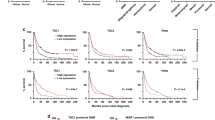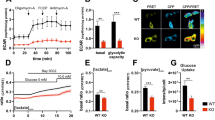Abstract
Loss of the tumor suppressor MMAC1 has been shown to be involved in breast, prostate and brain cancer. Consistent with its identification as a tumor suppressor, expression of MMAC1 has been demonstrated to reduce cell proliferation, tumorigenicity, and motility as well as affect cell–cell and cell–matrix interactions of malignant human glioma cells. Subsequently, MMAC1 was shown to have lipid phosphatase activity towards PIP3 and protein phosphatase activity against focal adhesion kinase (FAK). The lipid phosphatase activity of MMAC1 results in decreased activation of the PIP3-dependent, anti-apoptotic kinase, AKT. It is thought that this inhibition of AKT culminates with reduced glioma cell proliferation. In contrast, MMAC1's effects on cell motility, cell–cell and cell–matrix interactions are thought to be due to its protein phosphatase activity towards FAK. However, recent studies suggest that the lipid phosphatase activity of MMAC1 correlates with its ability to be a tumor suppressor. The high rate of mutation of MMAC1 in late stage metastatic tumors suggests that effects of MMAC1 on motility, cell–cell and cell–matrix interactions are due to its tumor suppressor activity. Therefore the lipid phosphatase activity of MMAC1 may affect PIP3 dependent signaling pathways and result in reduced motility and altered cell–cell and cell–matrix interactions. We demonstrate here that expression of MMAC1 in human glioma cells reduced intracellular levels of inositol trisphosphate and inhibited extracellular Ca2+ influx, suggesting that MMAC1 affects the phospholipase C signaling pathway. In addition, we show that MMAC1 expression inhibits integrin-linked kinase activity. Furthermore, we show that these effects require the catalytic activity of MMAC1. Our data thus provide a link of MMAC1 to PIP3 dependent signaling pathways that regulate cell–matrix and cell–cell interactions as well as motility. Lastly, we demonstrate that AKT3, an isoform of AKT highly expressed in the brain, is also a target for MMAC1 repression. These data suggest an important role for AKT3 in glioblastoma multiforme. We therefore propose that repression of multiple PIP3 dependent signaling pathways may be required for MMAC1 to act as a tumor suppressor.
This is a preview of subscription content, access via your institution
Access options
Subscribe to this journal
Receive 50 print issues and online access
$259.00 per year
only $5.18 per issue
Buy this article
- Purchase on SpringerLink
- Instant access to full article PDF
Prices may be subject to local taxes which are calculated during checkout







Similar content being viewed by others
References
Aoki M, Batista O, Bellacosa A, Tsichlis P and Vogt PK . 1998 Proc Natl Acad Sci USA 95: 14950–14955.
Baltuch GH and Yong VW . 1996 Brain Res 71: 143–149.
Brodbeck D, Cron P and Hemmings BA . 1999 J Biol Chem 274: 9133–9136.
Cheney IW, Johnson DE, Vaillancourt M-T, Avanzini J, Morimoto A, Demers GW, Wills KN, Shabram PW, Bolen JB, Tavtigian SV and Bookstein R . 1998 Cancer Res 58: 2331–2334.
Corvera S and Czech MP . 1998 Trends in Cell Biol 8: 442–446.
Delcommenne M, Tan C, Gary V, Rue L, Woodgett J and Dedhar S . 1998 Proc Natl Acad Sci USA 95: 11211–11216.
Downward J . 1998 Science 279: 673–674.
Falasca M, Logan SK, Lehto VP, Baccante G, Lemmon MA and Schlessinger J . 1998 EMBO J 17: 414–422.
Furnari FB, Lin H, Su Huang H-J and Cavenee WK . 1997 Proc Natl Acad Sci 94: 12479–12484.
Guldberg P, Straten P-t, Birck A, Ahrenkiel V, Kirkin AF and Zeuthen J . 1997 Cancer Res 57: 3660–3663.
Haas-Kogan D, Shalev N, Wong M, Mills G, Yount G and Stokoe D . 1998 Curr Biol 8: 1195–1198.
Hannigan GE, Leung-Hagesteijn C, Fitz-Gibbon L, Coppolino MG, Radeva G, Filmus J, Bell JC and Dedhar S . 1996 Nature 379: 91–96.
Kong D, Suzuki A, Zou T-T, Sakurada A, Kemp LW, Wakatsuki S, Yokoyama T, Yamakawa H, Furukawa T, Sato M, Ohuchi N, Sato S, Yin J, Wang S, Abraham JM, Souza RF, Smolinski KN, Meltzer SJ and Horii A . 1997 Nat Genet 17: 143–144.
Konishi H, Kuroda S, Tanaka M, Matsuzaki H, Ono Y, Kameyama K, Haga T and Kikkawa U . 1995 Biochem Biophys Res Comm 216: 526–534.
Khoshyomn S, Penar PL, Rossi J, Wells A, Abramson DL and Bhushan A . 1999 Neurosurg 44: 568–577.
Li D-M and Sun H . 1997 Cancer Res 57: 2124–2129.
Li D-M and Sun H . 1998 Proc Natl Acad Sci USA 95: 15406–15411.
Li J, Yen C, Liaw D, Podsypanina K, Bose S, Wang SI, Puc J, Miliaresis C, Rodgers L, McCombie R, Bigner SH, Giovanela BC, Ittman M, Tycko B, Hibshoosh H, Wigler MH and Parsons R . 1997 Science 275: 1943–1947.
Liaw D, Marsh DJ, Li J, Dahia PLM, Wang SI, Zheng Z, Bose S, Cal KM, Tsou HC, Peacocke M, Eng C and Parsons R . 1997 Nature Genet 16: 64–67.
Marsh DJ, Dahia PLM, Zheng Z, Liaw D, Parsons R, Gorlin RJ and Eng C . 1997 Nat Genet 16: 333–334.
Maehama T and Dixon J . 1998 J Biol Chem 273: 13375–13378.
Myers MP, Stolarov JP, Eng C, Li J, Wang SI, Wigler MH, Parsons R and Tonks NK . 1997 Proc Natl Acad Sci USA 94: 9052–9057.
Myers M, Pass I, Batty IH, Van der Kaay J, Stolarov JP, Hemmings BA, Wigler MH, Downes CP and Tonks NK . 1998 Proc Natl Acad Sci USA 95: 13513–13518.
Morimoto AMM, Berson AE, Fujii GH, Steck PA, Tavtigian SV, Bookstein R and Bolen JB . 1999 Oncogene 18: 1261–1266.
Nakatani K, Thompson DA, Barthel A, Sakaue H, Liu W, Weigel RJ and Roth RA . 1999 J Biol Chem 274: 21528–21532.
Radeva G, Petrocells T, Behrend E, Leung-Hagesteijn C, Films J, Slingerland J and Dedhar S . 1997 J Biol Chem 272: 13937–13944.
Rameh LE, Rhee SG, Spokes K, Kazlauskas A, Cantley LC and Cantley LG . 1998 J Biol Chem 273: 23750–23757.
Rhee SG and Bae YS . 1997 J Biol Chem 272: 15045–15048.
Ronnstrand L, Siegbahn A, Rorsman C, Johnell M, Hansen K and Heldin CH . 1999 J Biol Chem 274: 22089–22094.
Steck PA, Pershouse MA, Jasser SA, Yung WKA, Lin H, Ligon AH, Langford LA, Baumgard ML, Hattier T, Davis T, Frye C, Hu R, Swelund B, Teng DH-F and Tavtigain SV . 1997 Nature Genet 15: 356–362.
Suzuki A, de la Pompa JL, Stambolic V, Elia AJ, Sasaki T, del Barco Barrantes I, Ho A, Wakeman A, Itie A, Khoo W, Fukumoto M and Mak TW . 1998 Curr Biol 8: 1169–1178.
Stambolic V, Suzuki A, de la Pompa JL, Brothers GM, Mirtsos C, Sasaki T, Ruland J, Penninger JM, Siderovski DP and Mak TM . 1998 Cell 95: 29–39.
Tamura M, Gu J, Matsumoto K, Aota S, Parsons R and Yamada KM . 1998 Science 280: 1614–1617.
Turner T, Epps-Fung MV, Kassis J and Wells A . 1997 Clin Cancer Res 3: 2275–2282.
Vassbotn FS, Ostman A, Langeland N, Holmsen H, Westermark B, Heldin C-H and Nister M . 1994 J Cell Physiol 158: 381–389.
Wu X, Senechal K, Neshat M, Whang YE and Sawyers CL . 1998a Proc Natl Acad Sci USA 95: 15587–15591.
Wu C, Keightley SY, Leung-Hagesteijn C, Radeva G, Coppolino M, Goicoechea S, McDonald JA and Dedhar S . 1998b J Biol Chem 273: 528–536.
Yano S, Tokumitsu H and Soderling TR . 1998 Nature 396: 584–587.
Acknowledgements
We are grateful to Madeline Fort for providing mouse tissues and thank the FACS facility for help with the calcium flux assays. We also thank Emma Lees and Jing Wang for helpful comments on the manuscript and Maribel Andonian and Gary Burget for graphics support. DNAX Research Institute is fully supported by Schering-Plough Corporation.
Author information
Authors and Affiliations
Rights and permissions
About this article
Cite this article
Morimoto, A., Tomlinson, M., Nakatani, K. et al. The MMAC1 tumor suppressor phosphatase inhibits phospholipase C and integrin-linked kinase activity. Oncogene 19, 200–209 (2000). https://doi.org/10.1038/sj.onc.1203288
Received:
Revised:
Accepted:
Published:
Issue date:
DOI: https://doi.org/10.1038/sj.onc.1203288
Keywords
This article is cited by
-
Development and characterisation of a panel of phosphatidylinositide 3-kinase – mammalian target of rapamycin inhibitor resistant lung cancer cell lines
Scientific Reports (2018)
-
An increase in integrin-linked kinase non-canonically confers NF-κB-mediated growth advantages to gastric cancer cells by activating ERK1/2
Cell Communication and Signaling (2014)
-
Integrin-linked kinase: a cancer therapeutic target unique among its ILK
Nature Reviews Cancer (2005)
-
Functional and therapeutic significance of Akt deregulation in malignant melanoma
Cancer and Metastasis Reviews (2005)
-
ILKAP regulates ILK signaling and inhibits anchorage-independent growth
Oncogene (2004)



